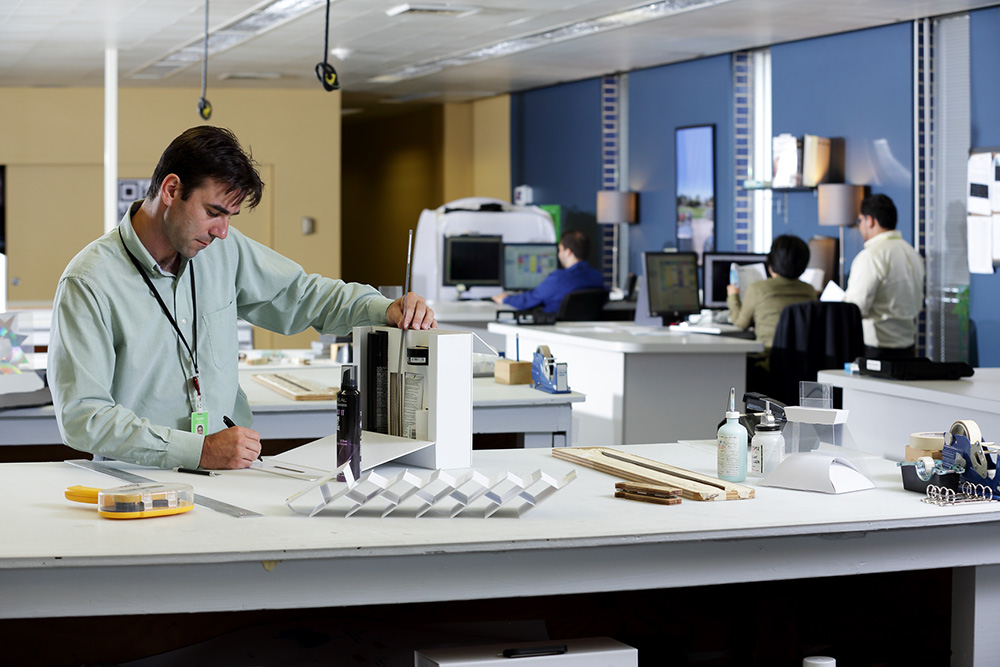
A structural packaging design is an extremely effective way to make your packaging and your product stand out amongst your competitors. However, not all structural packaging designs are created equal. So, what sets apart a great structural packaging design from structured packaging that is just okay? The answer is that there are several important steps packaging designers must take in order to ensure that their packaging design is successful and completes the goal you were aiming for.
Goals and Strategy
Before you start designing your structured packaging, it is important to define the goals and strategy for your packaging project. Is your packaging being created to portray your brand as high-end and exclusive? Is your packaging being created for your brand to be seen as an innovator in your industry? Or maybe your packaging’s intention is to be the first product noticed on the shelves? By collaborating with your print and packaging partners early on, you will ensure that each facet of your packaging is consistent with each other, therefore making your packaging more effective. Packaging that does not convey a clear goal or strategy will not have as powerful of an effect. Inconsistent packaging can result in consumers feeling confused on what your brand is about or consumers ignoring your product on the shelves.
Concepting and Design
It’s no surprise as to why the phrase, “two heads are better than one,” is so popular – it holds truth to it. When designing your structural design packaging project, you should not do it alone. Working with partners to vet your design concepts for feasibility and construction soundness will make it easier to identify construction or manufacturing flaws in your packaging design. This is extremely important because consumers want a package that is easy to open and protects the products integrity. A poorly designed package that doesn’t do both of these things may reflect poorly on your brand. Additionally, packaging should still be functional and protective.
At JohnsByrne, our team provides brands with concepts that are vetted with manufacturing. This ensures manufacturability of your packaging design.
Prototyping
Building real-life prototypes of your design concept makes it easy to visualize your final packaging and make adjustments based on key tests of your packaging. With a prototype, you can ensure that your product fits easily and securely inside the packaging. It also makes sure that your packaging meets all the requirements, such as the integrity of the package being maintained in changes in temperature, humidity, and during transportation.
As an example, JohnsByrne provides comps that mimic the final structure of the packaging. This allows customers to have a real-view of what the packaging will look like and make real decisions about potential packaging changes and improvements.
Manufacturing
The manufacturing process is more involved than one may think. Not only does it include the actual production of the packaging, but it also consists of assembling the packaging in the final fulfillment process. The manufacturing process alone can make or break a packaging design if it’s not well optimized for manufacturing and final fulfillment. In order to have a packaging design make it successfully through the manufacturing process, it’s important to consider certain factors that impact this process, as well as the product cost and your timeline. These factors include:
- Type of packaging material or substrate
- Material cost
- Manufacturing location
- The time it will take to manufacture the packaging
- Whether your packaging will use automation or hand assembly during manufacturing
Conclusion
When designing a structured package, this full-view approach is critical to ensure high quality and innovative designs. Furthermore, clear and concise planning can save your brand valuable time and money. Interested in creating an effective structural packaging design for your brand’s next product? Contact JohnsByrne to set up a consultation with one of our experts. We can work with you to create a sound and successful packaging design that accurately reflects your brand and grabs the attention of your customers.
Related Posts
When planning to bring a new product to market, the packaging is critical in consumer response. Not only should the product be presented with outstanding … Packaging Choices: Rigid Boxes vs Folding Cartons
Unique packaging is hard to come by. With so many products competing for attention on the shelf, achieving uniqueness is almost impossible. Whether it’s launching … Unique Packaging Designs
With the holidays in full swing, we’re excited to bring back our annual 12 Days of JB Faves! Once again, we have an array of … ‘12 Days of JohnsByrne Faves’ 2023 Holiday Packaging

